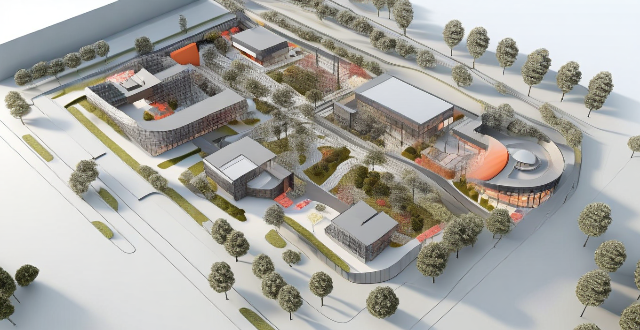Ecological design is a sustainable approach to architecture and interior design that aims to minimize the negative impact on the environment. However, implementing ecological design can be challenging for architects and designers due to various factors such as limited availability of sustainable materials, higher costs, lack of client education, regulatory challenges, and technological limitations. To overcome these challenges, architects and designers must educate their clients about the benefits of sustainable design, collaborate with other professionals in the field, navigate complex regulatory requirements, and stay up-to-date on new technologies and materials. By addressing these challenges through education, collaboration, and innovation, architects and designers can create more sustainable buildings and spaces for future generations.

Challenges Faced by Architects and Designers When Implementing Ecological Design
Ecological design, also known as sustainable or green design, is an approach to architecture and interior design that aims to minimize the negative impact on the environment. This approach involves using materials and technologies that reduce energy consumption, waste, and pollution while promoting a healthy and comfortable living environment. However, implementing ecological design can be challenging for architects and designers due to various factors. In this article, we will discuss some of these challenges in detail.
1. Limited Availability of Sustainable Materials
One of the primary challenges faced by architects and designers when implementing ecological design is the limited availability of sustainable materials. While there are many eco-friendly materials available on the market, they may not always be easily accessible or affordable. This can make it difficult for designers to source the necessary materials for their projects without compromising their sustainability goals.
Examples of sustainable materials include:
- Recycled glass
- Bamboo flooring
- Cork wall panels
- Low-VOC paints
2. Higher Costs
Another challenge faced by architects and designers when implementing ecological design is the higher cost associated with sustainable materials and technologies. While these costs are gradually decreasing as more companies invest in sustainable practices, they still tend to be more expensive than traditional options. This can make it difficult for clients who have tight budgets or are not fully committed to sustainability goals.
Cost considerations include:
- Initial investment in sustainable materials and technologies
- Maintenance and replacement costs over time
- Energy savings from reduced consumption over time
3. Lack of Client Education
Many clients may not fully understand the benefits of ecological design or may be hesitant to invest in sustainable practices due to perceived higher costs or limited knowledge about the subject. As a result, architects and designers often face the challenge of educating their clients about the long-term benefits of sustainable design, such as reduced energy bills, improved air quality, and increased property value.
Educational strategies include:
- Providing informational resources such as articles, videos, and case studies
- Offering consultation services to help clients understand the benefits of sustainable design
- Collaborating with other professionals in the field to promote awareness and education about ecological design
4. Regulatory Challenges
Architects and designers must also navigate complex regulatory requirements when implementing ecological design. These regulations can vary widely depending on the location and type of project, making it challenging to ensure compliance with all necessary standards and guidelines. Additionally, some regions may lack clear regulations or incentives for sustainable design practices, which can limit the adoption of these practices among architects and designers.
Regulatory considerations include:
- Building codes and standards related to energy efficiency, water conservation, and waste reduction
- Local zoning laws and permitting requirements for renewable energy systems such as solar panels or wind turbines
- Federal tax credits and incentives for sustainable design practices
5. Technological Limitations
While technology has made significant advancements in recent years, there are still limitations when it comes to implementing ecological design. For example, some sustainable materials may not yet be available or may have limited applications due to technological constraints. Additionally, integrating new technologies into existing structures can be challenging and may require specialized expertise.
Technological considerations include:
- Compatibility issues between different sustainable technologies
- The need for specialized training or certifications for installation and maintenance
- Ongoing development and refinement of new sustainable materials and technologies
In conclusion, implementing ecological design presents several challenges for architects and designers. These challenges include limited availability of sustainable materials, higher costs, lack of client education, regulatory challenges, and technological limitations. However, by addressing these challenges through education, collaboration, and innovation, architects and designers can continue to advance the field of ecological design and create more sustainable buildings and spaces for future generations.